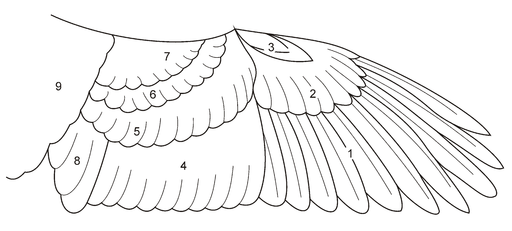 |
| Plate 1: Montagu's Harrier (Juvenile) Circus pygargus Flight, Plumage |
 |
| Plate 2: Montagu's Harrier (Juvenile) Circus pygargus Flight, Underside of plumage |
 |
| Plate 3: Montagu's Harrier (Juvenile) Circus pygargus Crouching over kill of a small bird |
 |
| Plate 4: Montagu's Harrier (Juvenile) Circus pygargus Flight, Face profile and underparts |
Rajasthan
is a state I have been independently exploring since 1977, from different
perspectives. Mostly done by road, main perspectives have been: tourism;
observing natural scenery – I love the solitude and shifting scenes of the
desert landscape; pilgrimage; to sample authentic cuisine cooked in rural/rustic
kitchens; an easy weekend escape from Delhi’s humdrum along with my son; and of
course watching wildlife and birding. Through these forays into the state I’ve frequently
fallen into the trap of presuming that I’ve seen every inch of it only to be
surprised by a new twist. One such inch was Tal Chappar, a wild patch of savanna
grassland situated in Churu district.
It is a birder’s paradise – a couple
of days spent there can yield a rich list of sightings of species, especially
predators.
This is my first recorded
sighting of Montagu’s Harrier. An active juvenile who showed me how Montagu’s
Harriers hunt, bask, or simply sail the currents surveying their territory.
Unfortunately, some of the interesting events happened at a very large distance
from me, much beyond the lucid scope of my camera-lens system for pictures of
any clarity. For instance, capture of prey and feeding upon it. Or for instance
the perched pose. Maybe I’ll be luckier on another trip. That said, fact
remains that I saw such events with my eyes (and aids such as binoculars), and
that matters more I guess. At least I managed to photograph decent flying
images of this bird and other raptors.
Montagu’s
harrier: Circus pygargus
IUCN
Status: Least Concern
Pallid harrier and Hen harrier –
the former more than the latter - offer challenges to correct identification of
Montagu’s harrier, with regard to juveniles, immature adults and adults of both
sexes. However, the females and juveniles of Pallid and Montagu’s harriers can
be most confusing. At least for me.
It is a winter visitor to large
parts of India.
To understand how I identified
this bird as Montagu’s harrier (juvenile), it is necessary to broadly know
parts of a wing, a diagram of which I shall use from Wikimedia Commons with
proper attribution.
 |
| Plate 5: Parts of bird's wing 1 = Primary remiges, 2 = Greater primary coverts, 3 = Alula, 4 = Secondary remiges, 5 = Greater secondary coverts, 6 = Median secondary coverts, 7 = Lesser secondary coverts, 8 = Tertiary remiges and 9 = Scapulares By Muriel Gottrop (Own work) [Public domain], via Wikimedia Commons |
Main
Features:
1. This
bird was about 40-50 cms in size and a wingspan close to 100 cms.
2. First
off, the typical facial look (Plate 3
– apologies for poor quality of image), kind of owlish if you know what I mean,
identifies this as a harrier of some sorts. We take it up from there and narrow
down to the correct diagnosis. Which one is it? What sex? What age?
3. Plate 4 shows
the face in profile – definitely a harrier – and the rufous hue of the undercarriage
points us to a juvenile of the species. Combined with the overall colour and
pattern, we know this is a first-year juvenile. At this stage, it is difficult
to tell the sexes.
4. We now
wait for the bird to climb higher so we can look at the patterns on the
underside besides the silhouette in flight. (Plate 2)
5. As it
soars, one can note the darker upper part (back) of the body (Plate 1) and combined with
rufous undercarriage, definitely a juvenile.
6. Let’s
refer to the wing patterns (Plate 5)
above: Primary feathers that form the ‘hand’ have indistinctly barred bases,
unbarred fingers and dark trailing edges. (Plate
2) . This is typical of Montagu’s harrier.
7. Turning
to facial features (Plate 2 & Plate
4): more white around the eye in the case of Montagu’s harrier; deeper
white supercilium; broader white cheek extending upto the loreal area in comparison
with Pallid harrier; smaller dark ear coverts; only a faint spotted and
streaked half-collar around neck in comparison to clear white unspotted round
collar in case of Pallid harrier; dark neck sides with streaks instead of solid
colour.
8. Underparts
are rufous coloured and show streaks on either side of breast extending up to
flank area. (Plate 2 & Plate 4)
9. Evenly
banded tail on the underside (Plate 2)
instead of plain underside of tail of Pallid harrier.
Any suggestions and discussions
are welcome.
Photographed at Taal Chappar, Distt. Churu,
Rajasthan, India on 3.10.2014
Camera used: Nikon D5100 DSLR with Tamron
150-600mm Lens.



















No comments:
Post a Comment